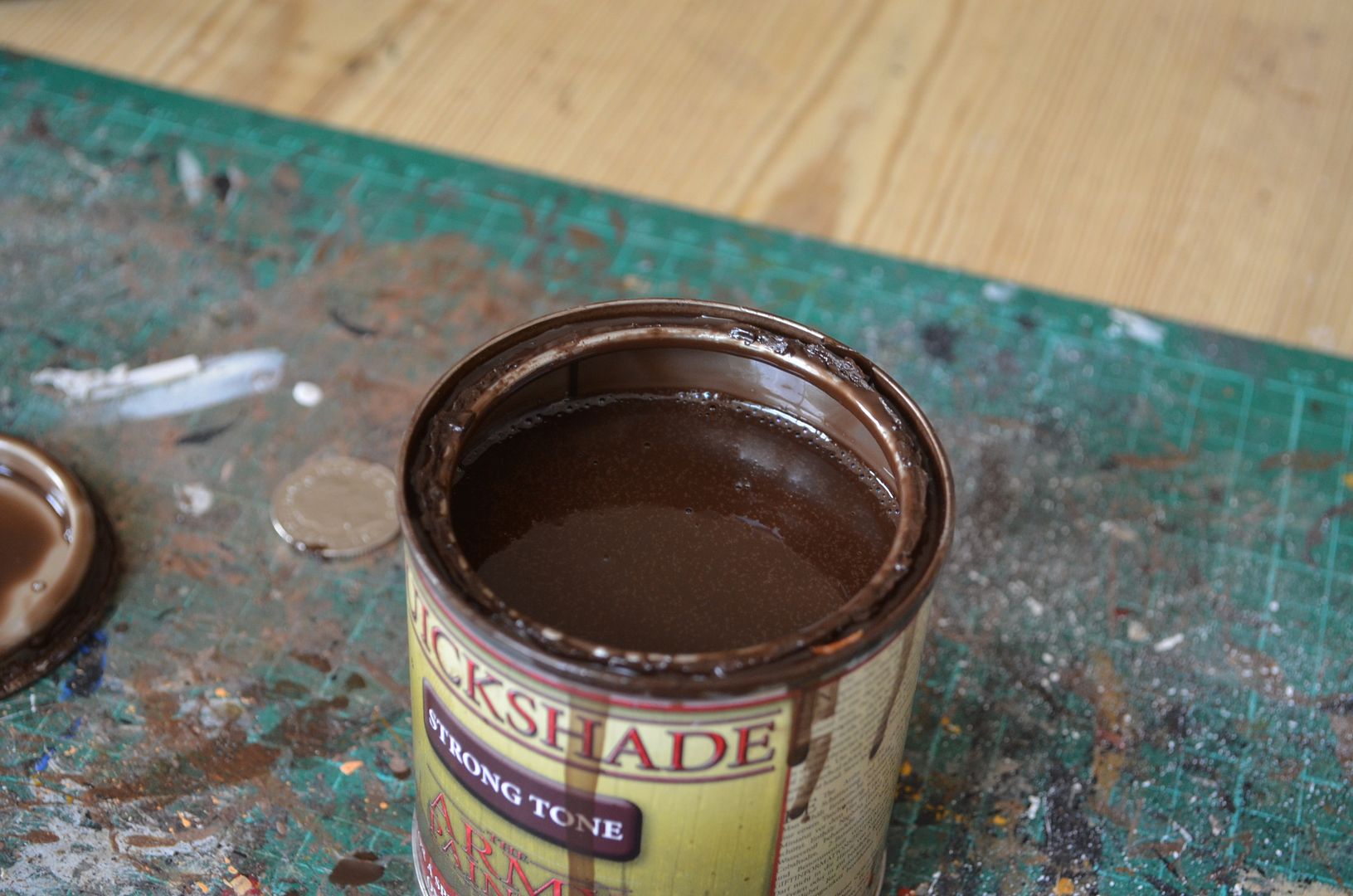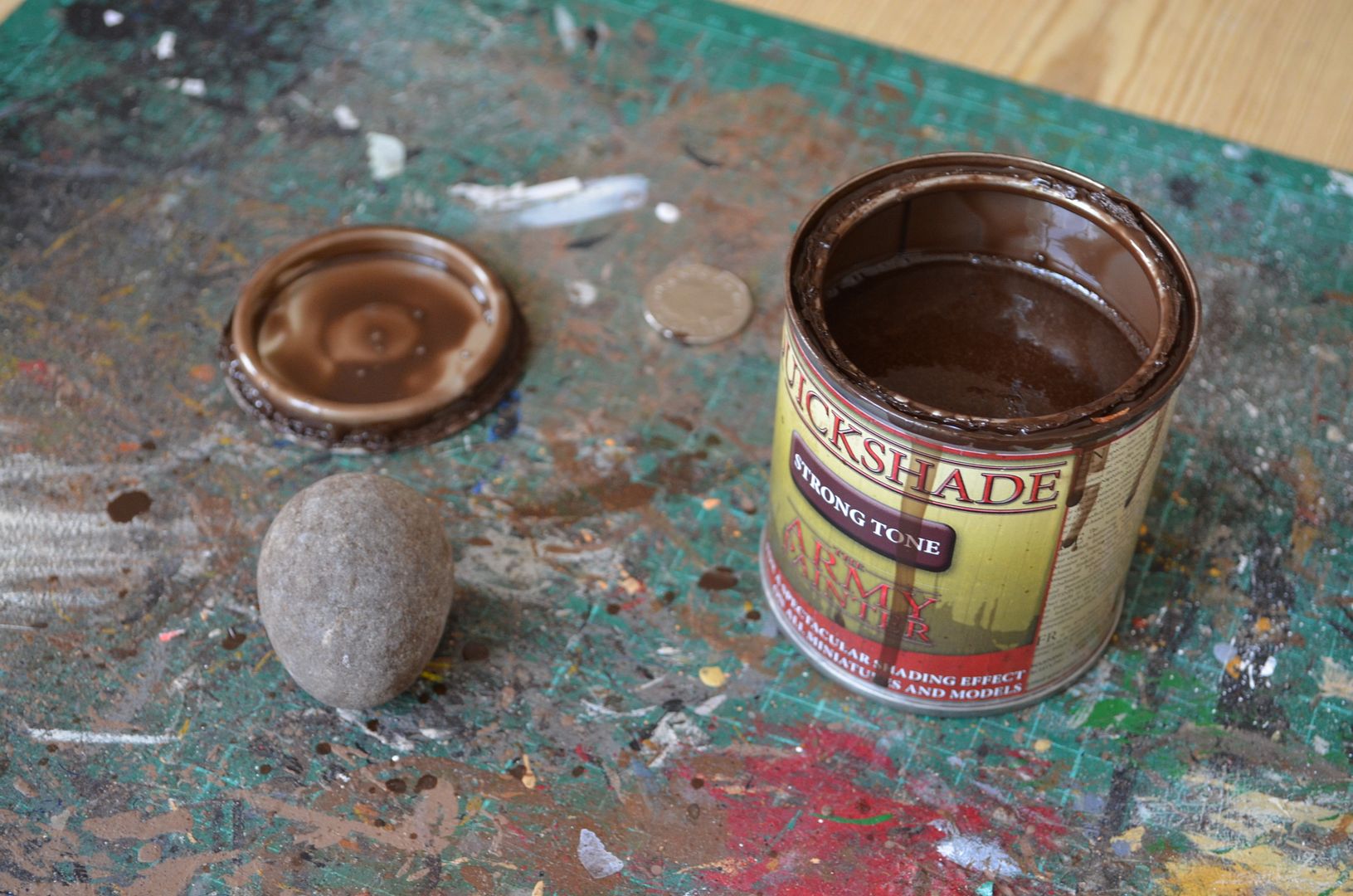However these pots of dip are not cheap - current retail about 20 quid. Over the last three years I have got to the point where I have used around 30% of the tin and then a crust/skin forms on the surface of the paint. At first I thought this might be because air was getting to the dip and causing it to harden. So I began to wrap the tins once the lid was firmly on in clingfilm to create an airtight seal.
This did not prevent the skin from forming. I then had a eureka moment - and it really was like Archimedes Eurejka moment when he discovered displacement. I figured out that the skin is forming because the amount of air inside the tin is sufficient to cause this reaction - how do i remove the air?
Simples - I add something else to the pot to raise the level of the dip and create less air.
In my case I have used a solid pebble as I doubt this will chemically react with the dip.
 |
| As you can see the pebble has raised the dip level |
This hopefully solves an issue, saves money and is of interest to all you other 'dippers'
cheers

I reckon that'll work a treat. I don't use their dip, but I do have wood varnish, same stuff, and the same thing has been happening to me. I transferred it into a smaller bottle, but I'll add an inert object to the jar as well, just to raise the level.
ReplyDeleteThanks for the info, cheers :)
Simples really, well done.
ReplyDeleteGood idea and less messy than transferring to a smaller container.
ReplyDeleteSimple & clever. Now to find a suitable stone. Since I live in New England, it should not be hard to find a stone. :-)
ReplyDeleteClever!
ReplyDeleteI used to use AP Quickshade... as well as some hardware store brands of varnish (with varying degrees of cost savings and efficacy) but gave it up a year ago so I could step-up my painting skills. Now that I've done that I'm thinking of going back to some Quickshade and this advice will come in handy.
great idea !!!!
ReplyDeleteThanks for the great idea, simple works! I've noticed the same problem, & resolved myself to just poking a hole into the crust & getting at the liquid below for the task at hand. Like you, I pretty much use this dip on all my miniatures for the same reasons as you. Cheers
ReplyDeleteClever!
ReplyDeleteThat is a great idea. In the past I have inverted the can after use so that the crust forms at the bottom. This then leaves all the good stuff just under the lid. But, just make absolutely sure it is not leaking!
ReplyDeleteNot thought about that and definately worth a try.
ReplyDeleteA friend of mine often uses the ornamental glass beads / chips that are normally used for decorations in vases. Using them in varying quantities as needed, as he uses more of the varnish. It seemed a good idea to me. He also gives the tin a regular shake and they act like an activator in a rattle spray tin.
ReplyDeleteSadly, washes/dip don't seem to work with enamels...
ReplyDeleteWhy not??
DeleteBack in the day I used washes on enamel all the time, except back then I was using thinned gloss brown paint. (Mixing it with varnish would have worked nicely too) Of course my varnish from back then has yellowed enough it might as well have been a brown wash.
DeleteWow, great tip. Have to try that!
ReplyDeleteAwesome idea. Had the same happen to me. Will try this.
ReplyDeleteNot thought about that and definately worth a try.
ReplyDeletegoldenslot